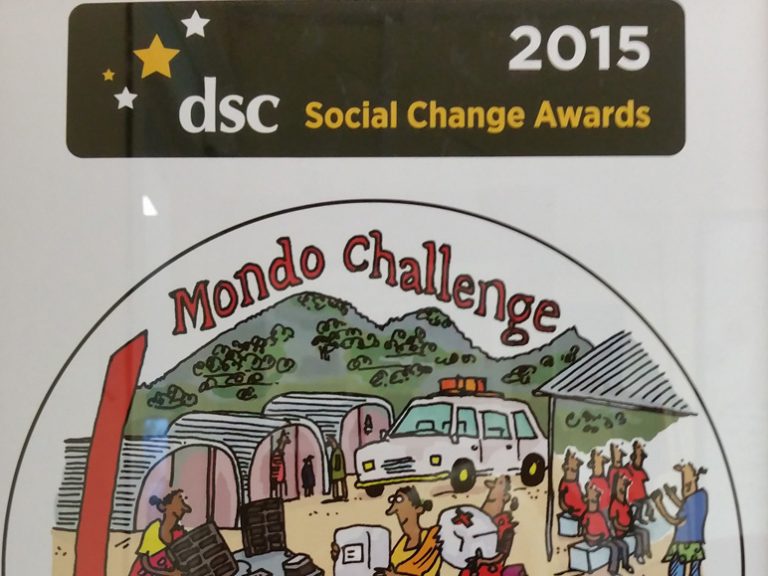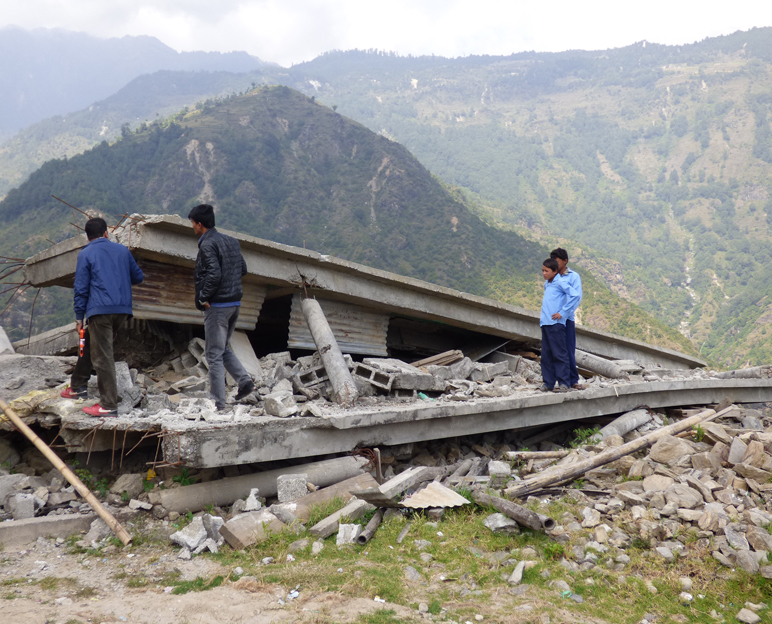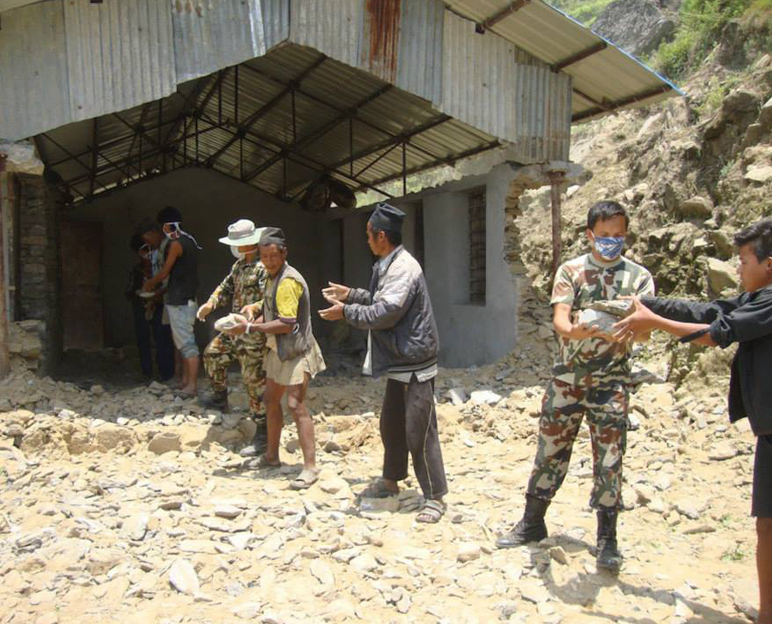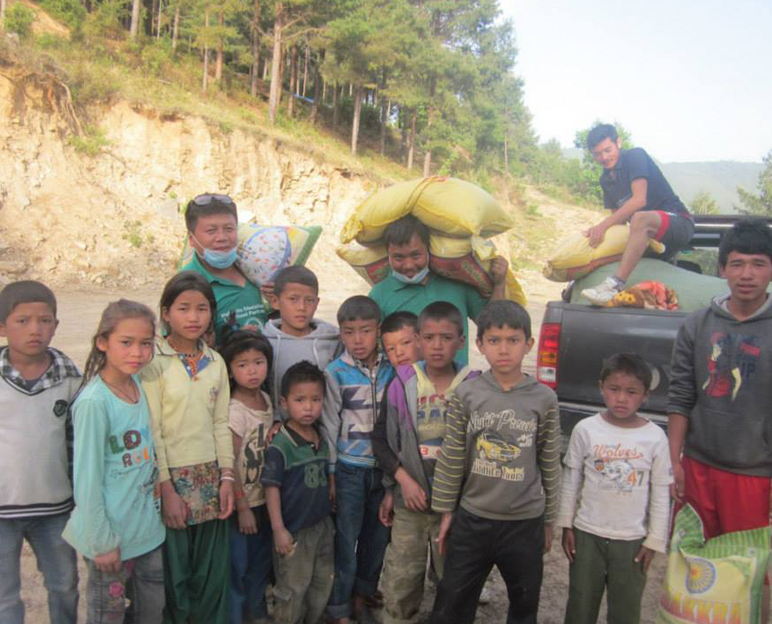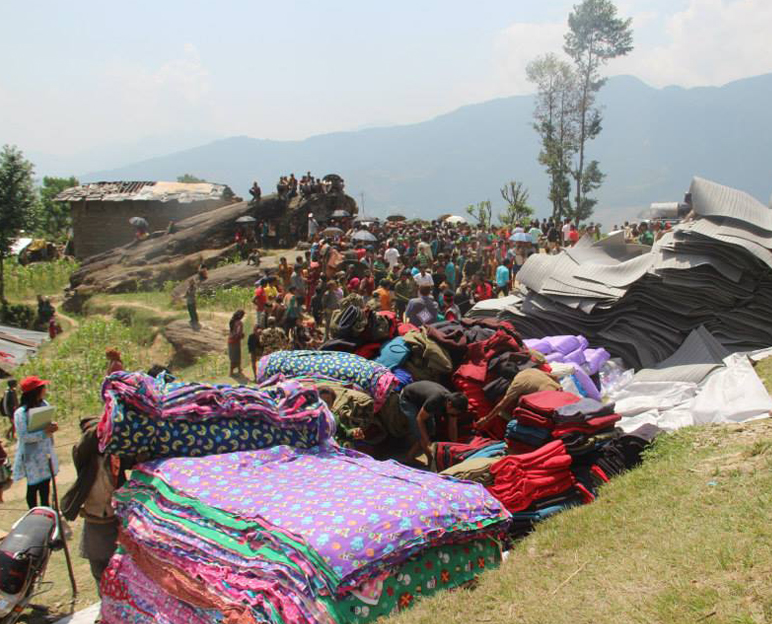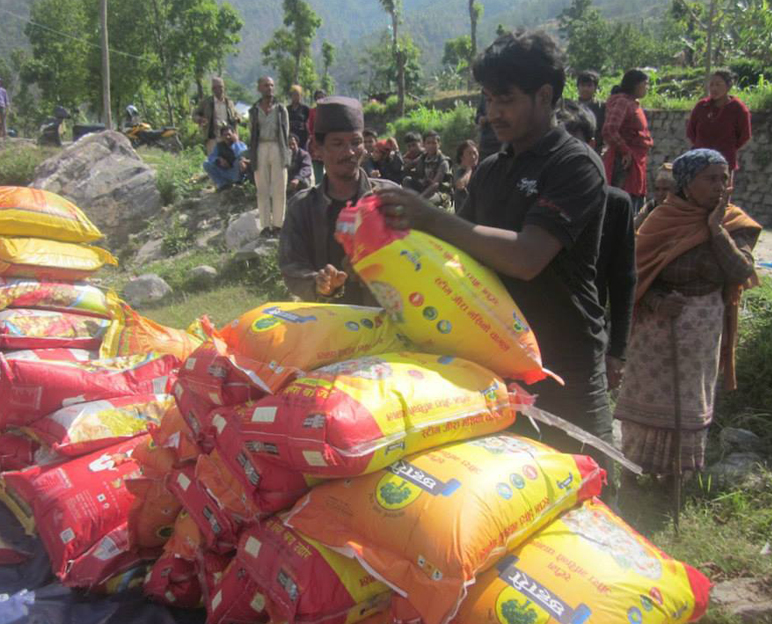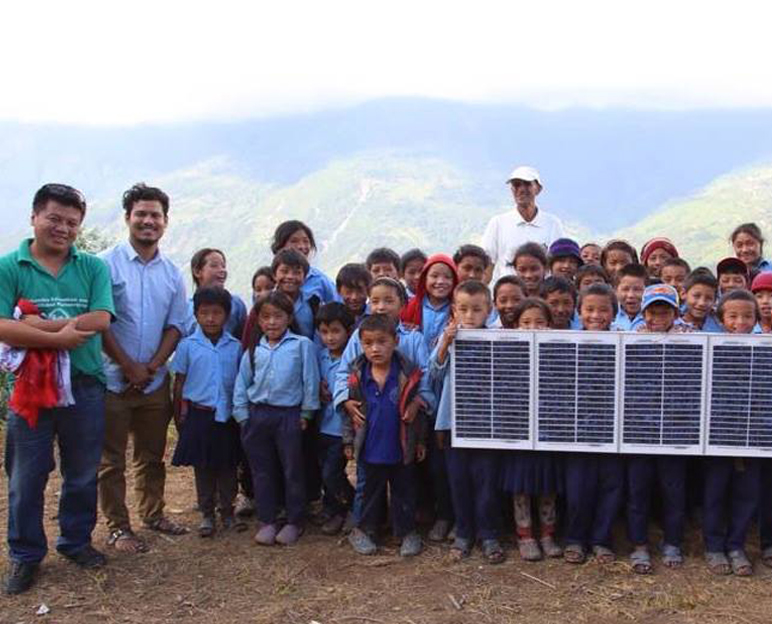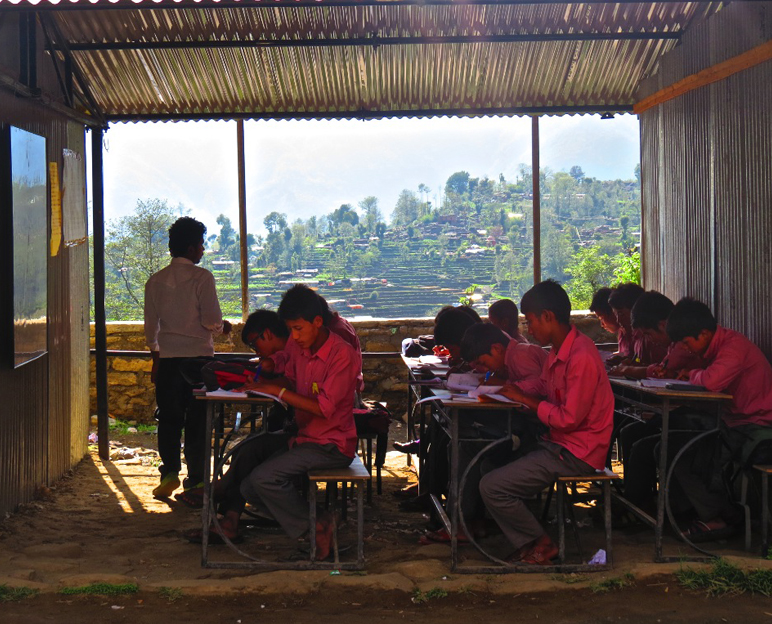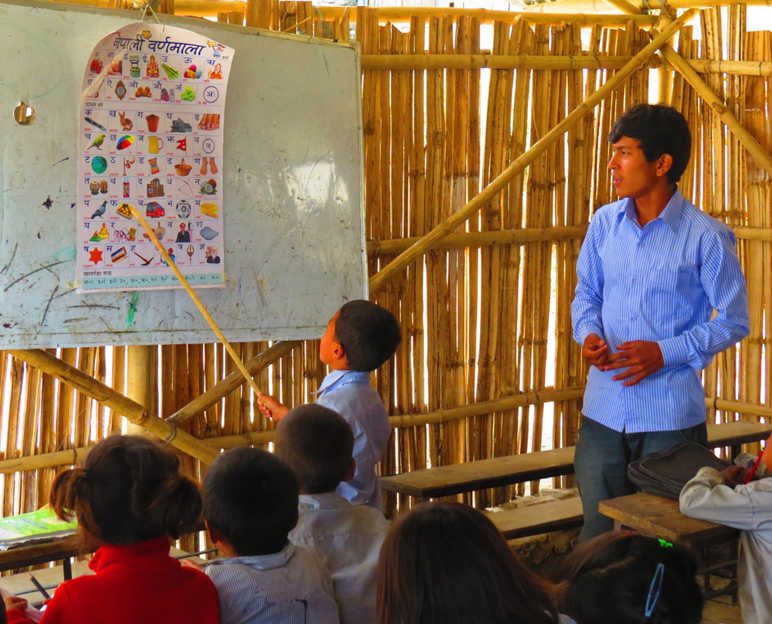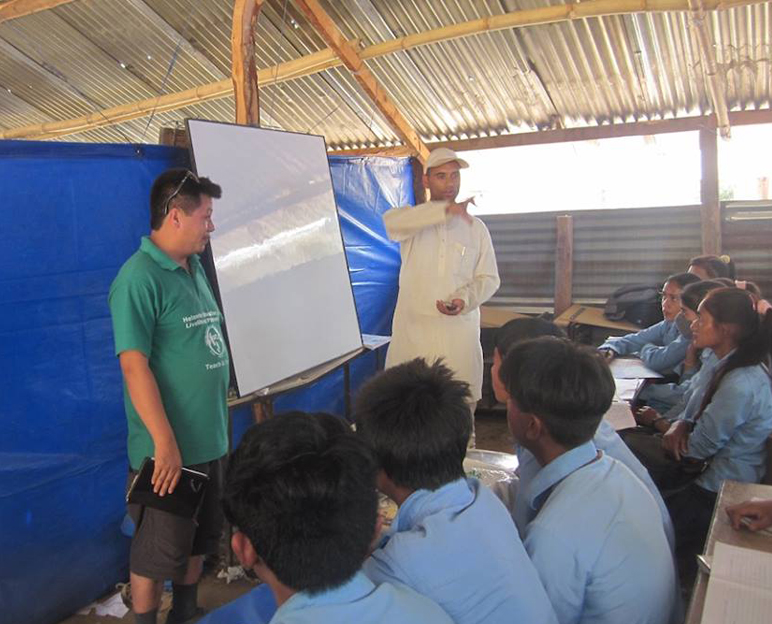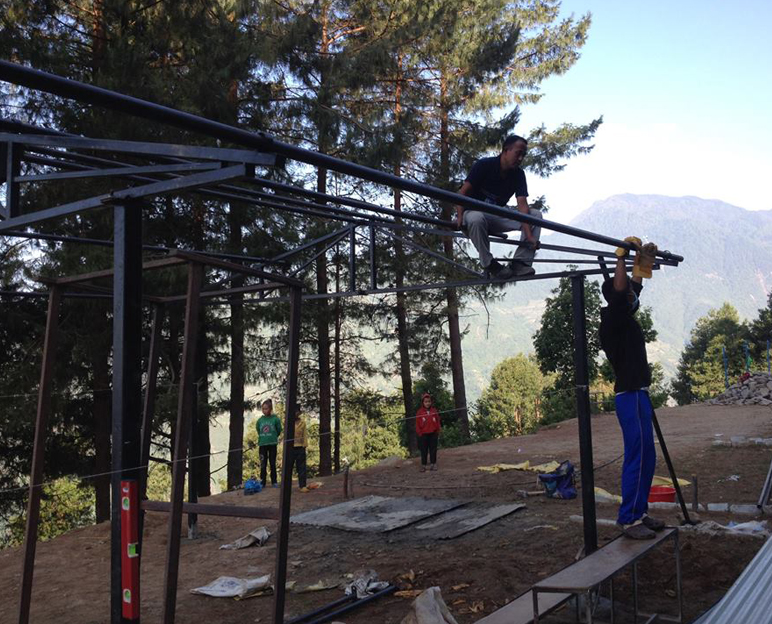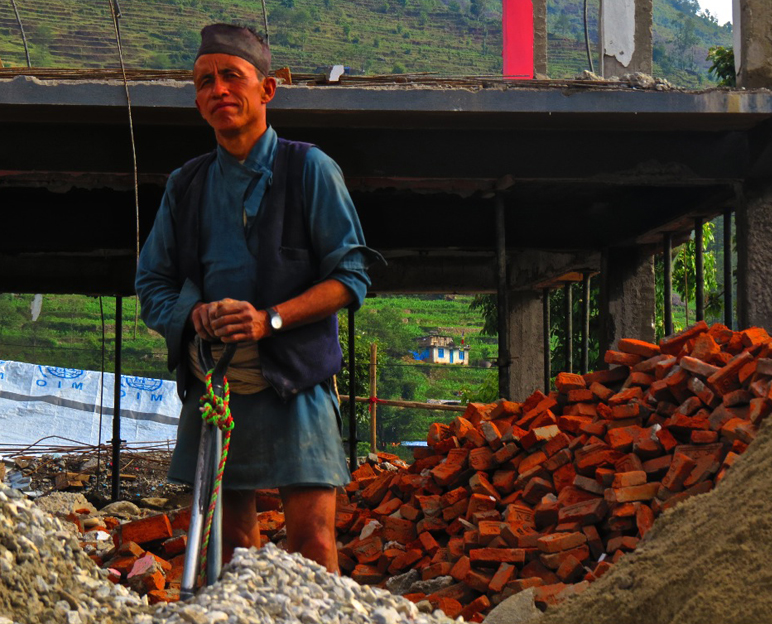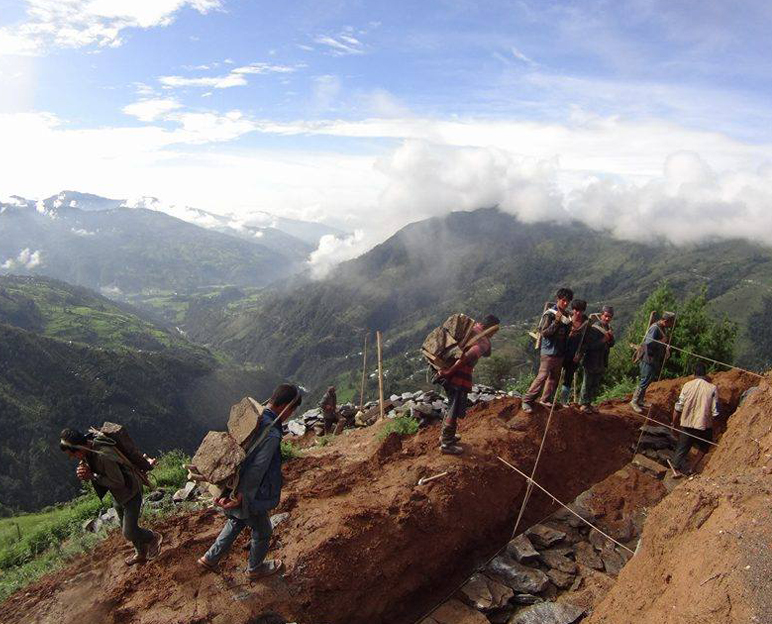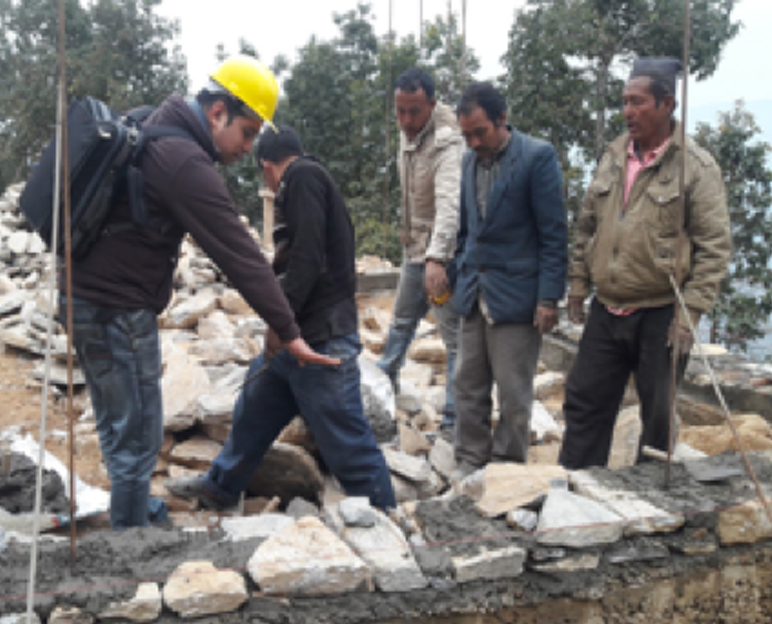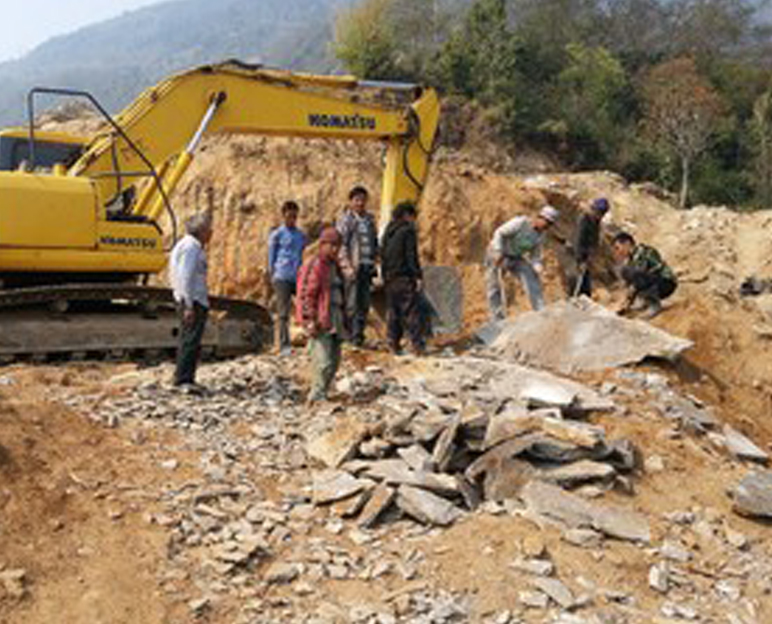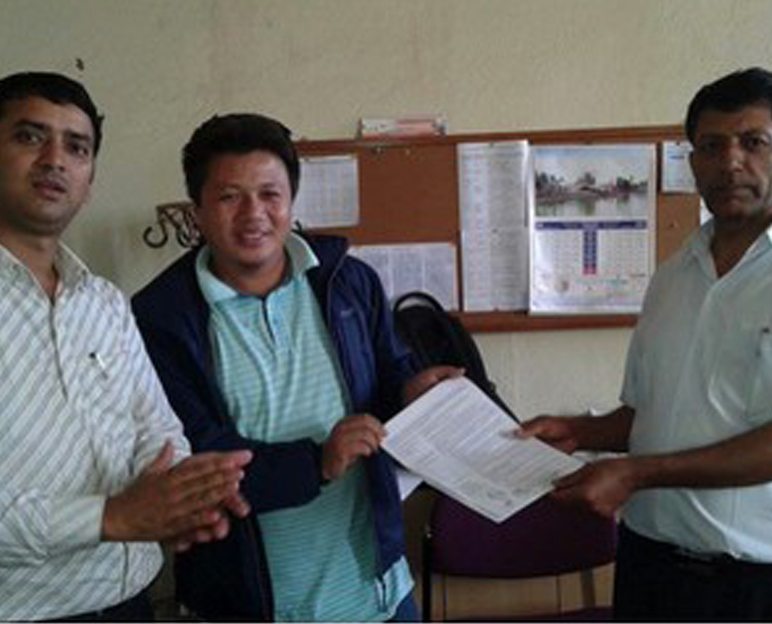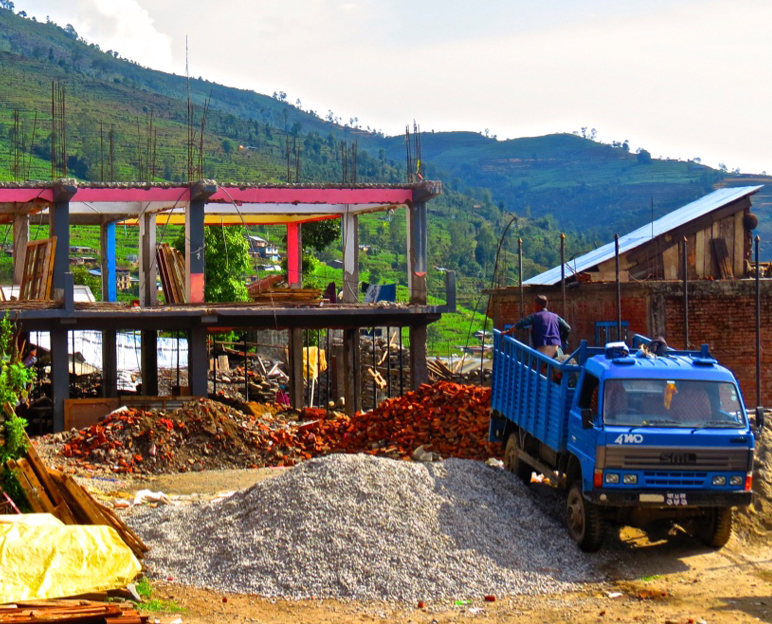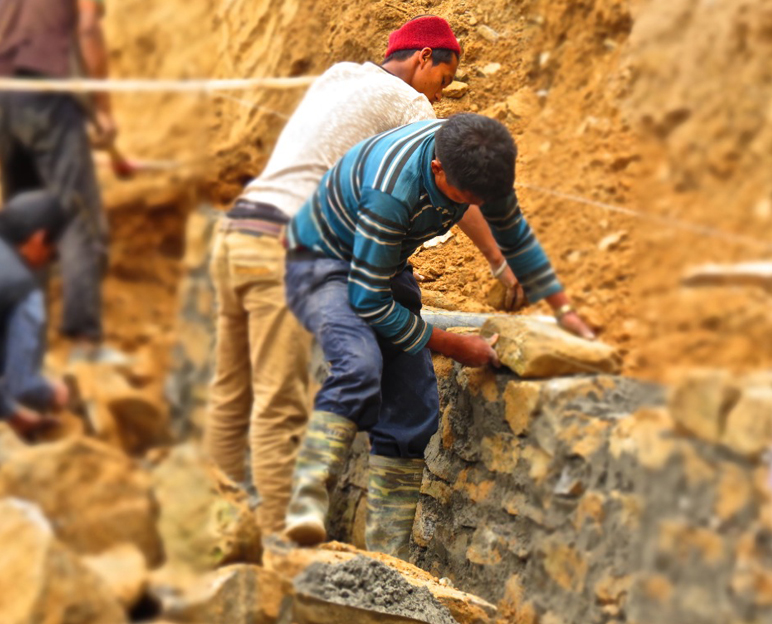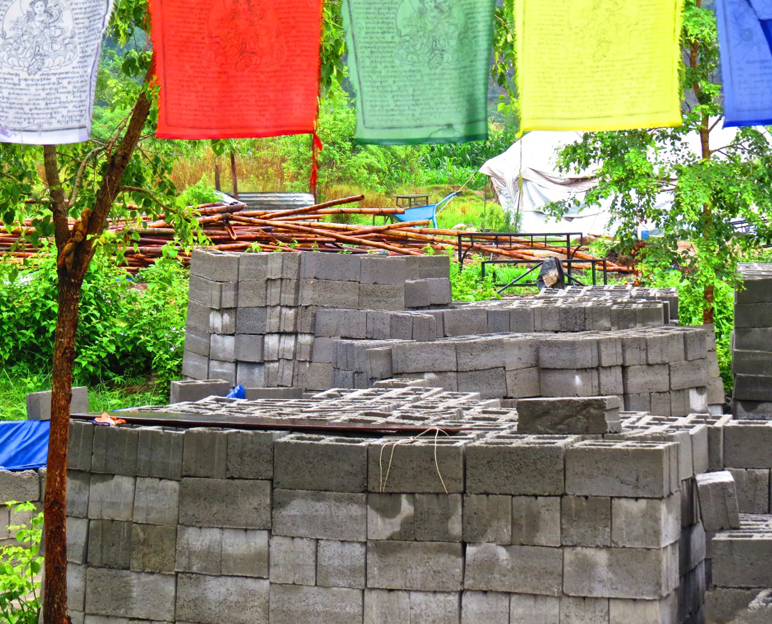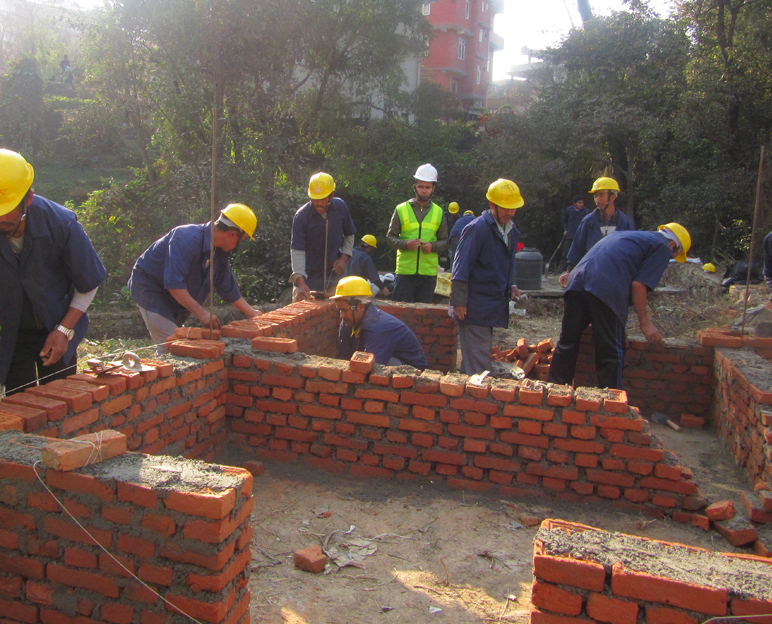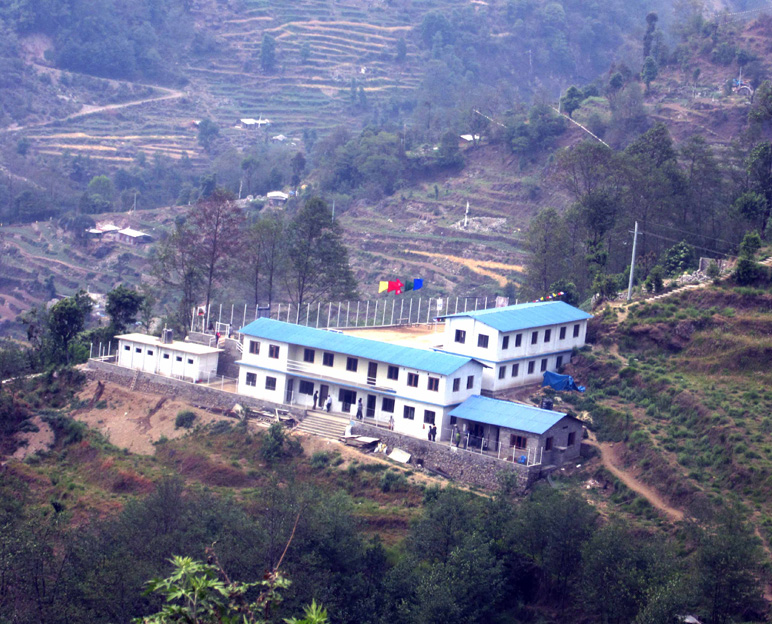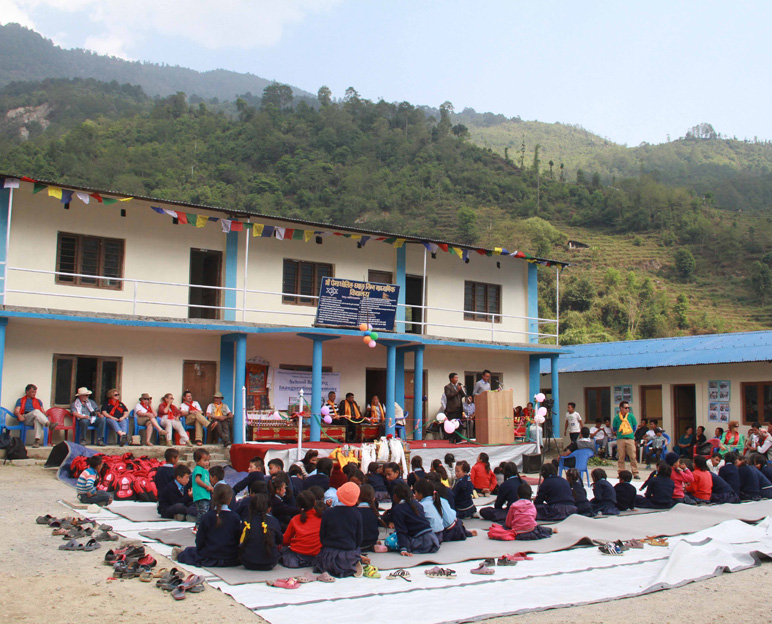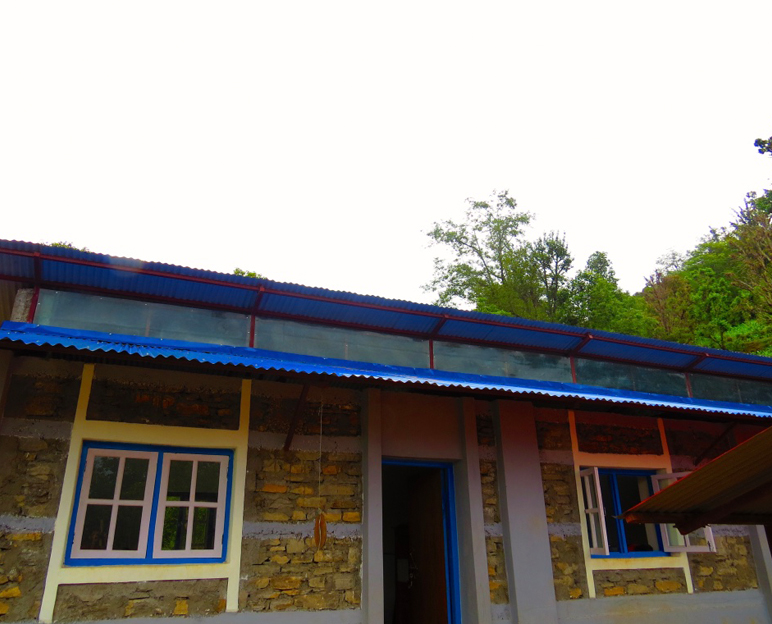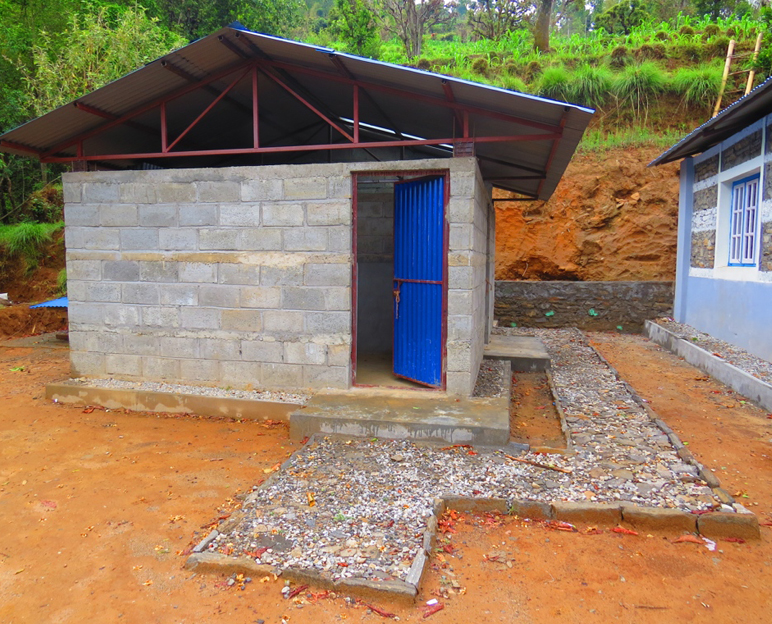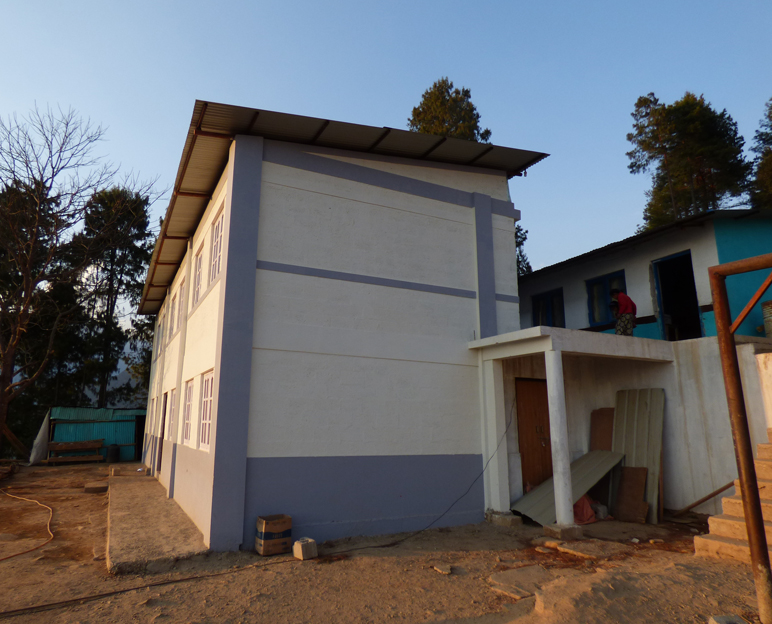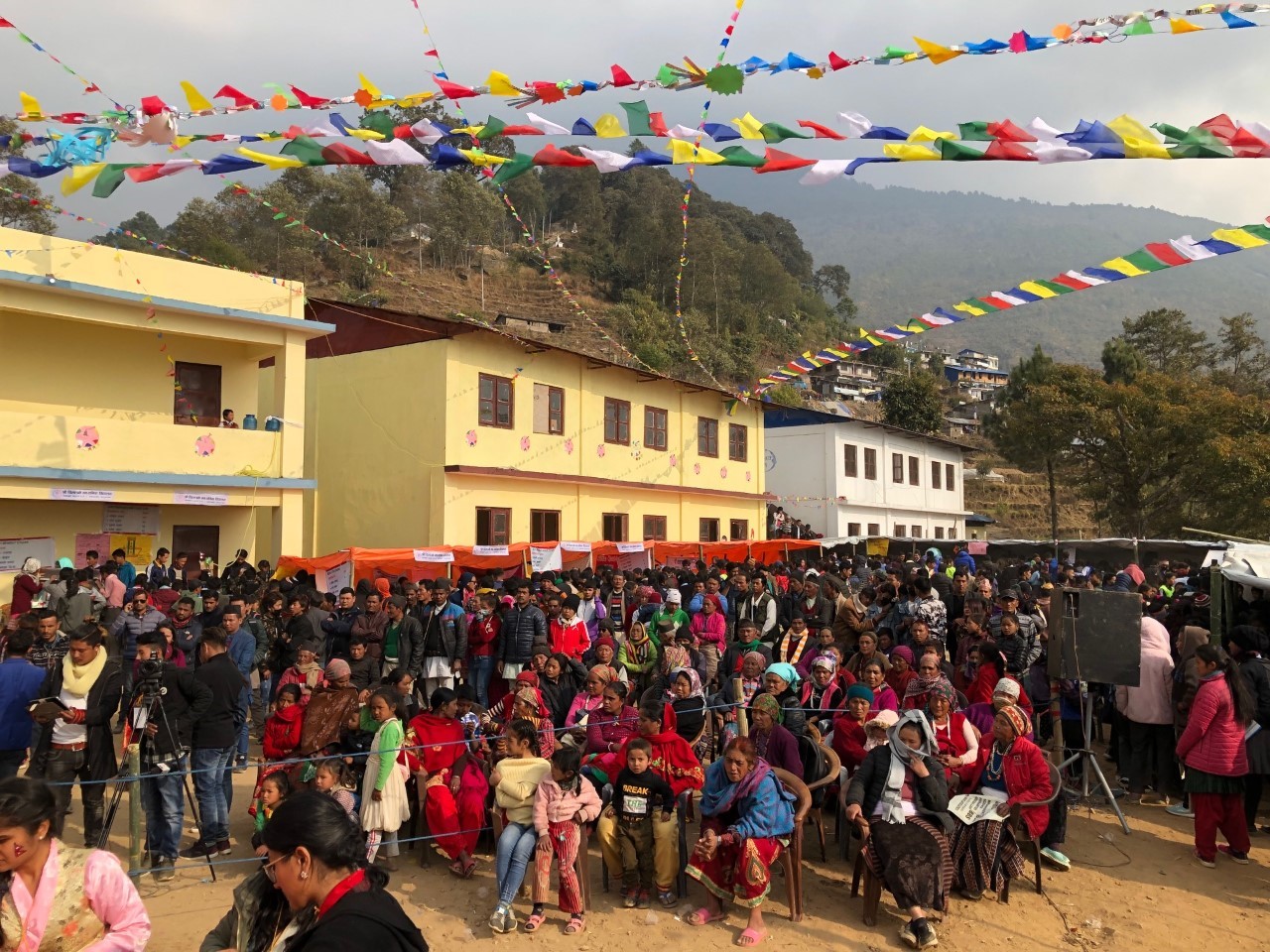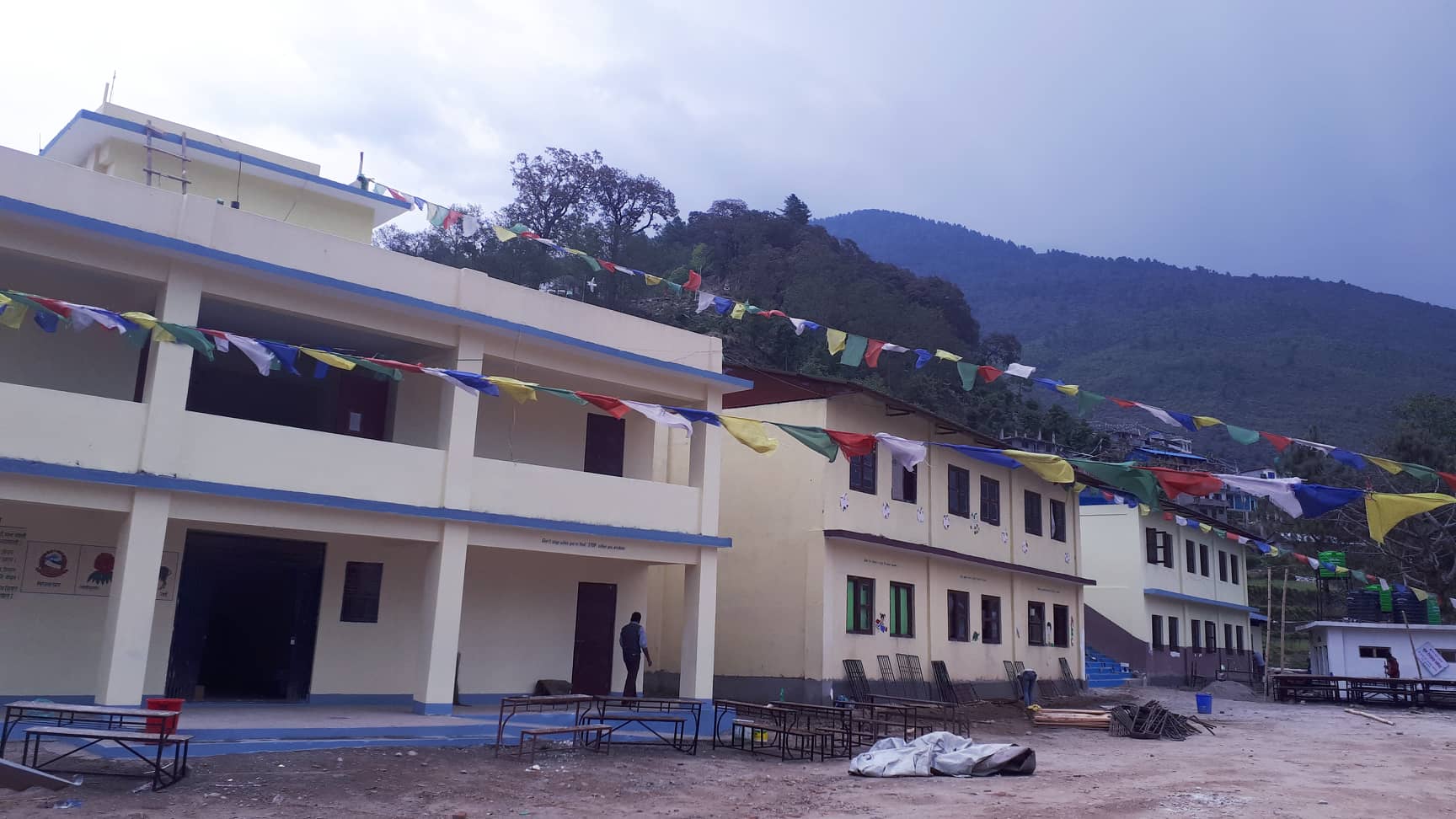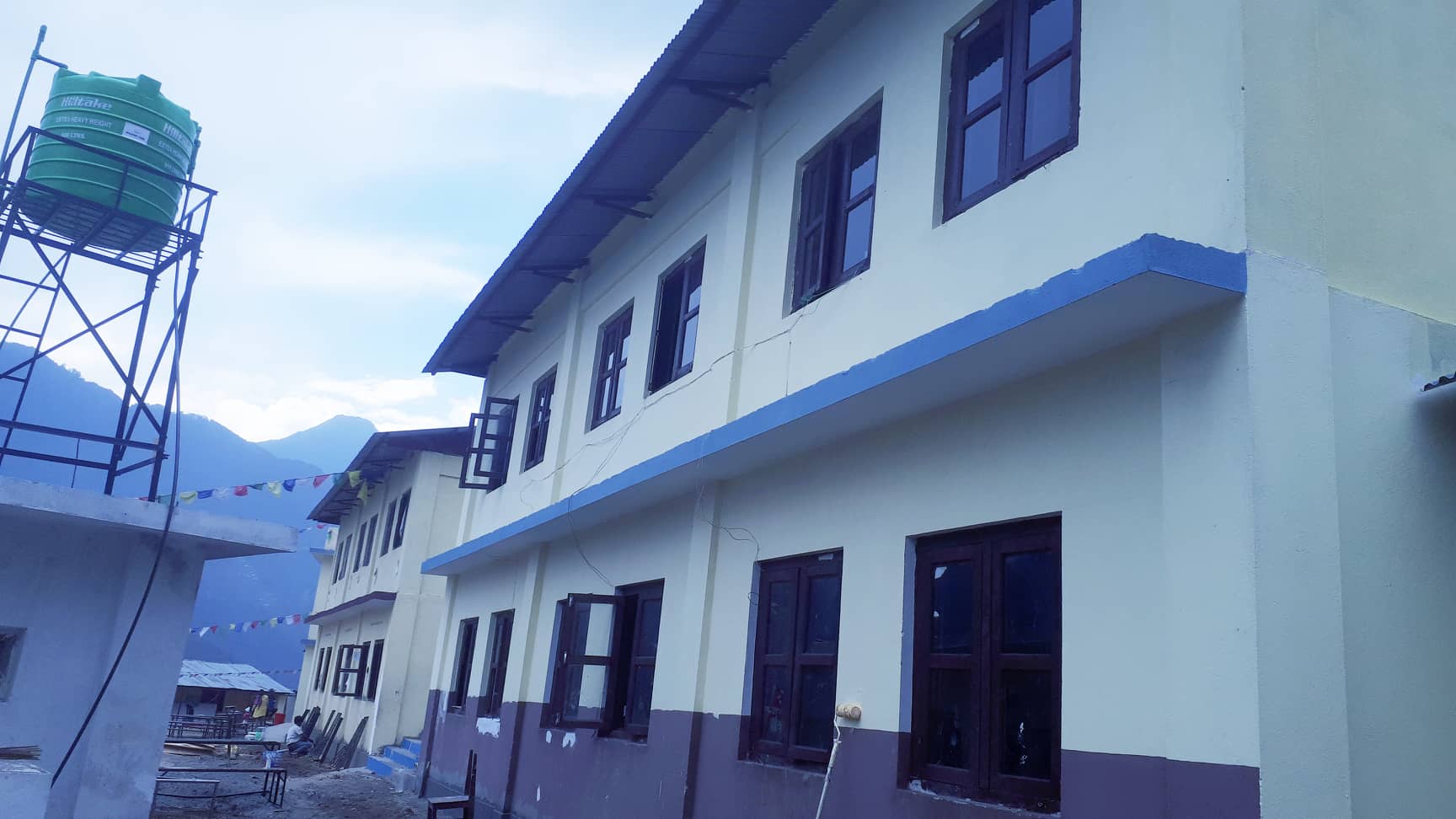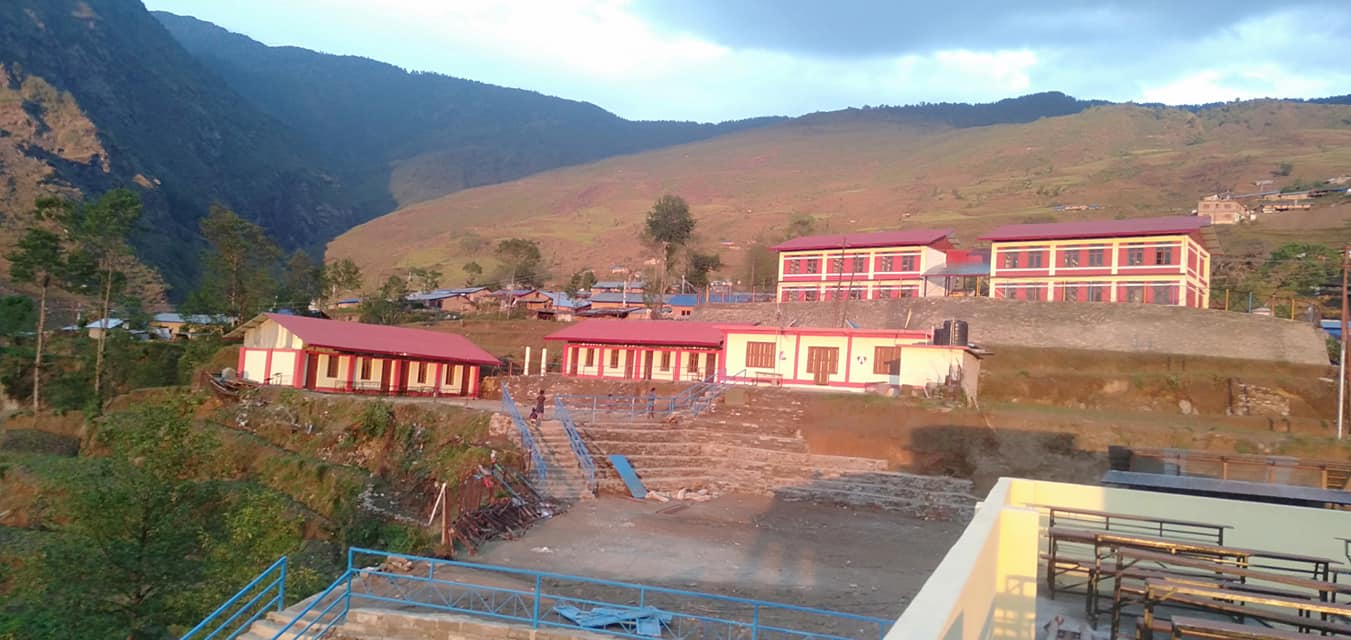Responding to the Earthquakes
April 2015
Mondo has been working in Nepal for over 10 years on community development programmes focused around schools and capacity building in education in the Helambu region, 80kms North East of Kathmandu.
We were shocked and saddened to hear of the devastation caused by the earthquake that hit Nepal on 25 April 2015, along with the numerous aftershocks that followed. On this page we chronicle our efforts, along with those of our local partner in Helambu, the Helambu Education and Livelihood Project (HELP), in providing immediate assistance and relief to the villagers on the ground.
Once we had provided support as first responders in the region, we worked with the local community to create a plan to repair, rebuild and resource schools which had been totally or partially destroyed. Working with support from the Nepali Department of Education, we have committed to working with 15 villages. Six of those re-built and re-designed schools were completed and handed over in 2016 and early 2017, and construction is underway for more schools!
We are also proud to have been awarded the Directory of Social Change’s Influencer Award for our efforts in the region.
Many villages have lost almost all their dwellings, leaving villagers homeless. A number of deaths have tragically taken place including some 30 children in Gunsa, and many people are injured. Roads are completely closed and we are helping Jimmy organise helicopter evacuation of the most serious cases – initial reports, 28 April 2015
Initial reports of villages being totally flattened were verified as the scale of the devastation slowly became clear…The list of injured across the valley numbers in the hundreds if not the thousands – further reports, 28 April 2015
Our local team touched base with the Kiul and Helambu Village Development Committees on Thursday (30 April) and returned on Saturday (2 May) with food, supplies and solar cells. Determined to reach as far into the affected area as they could, our team mobilised excavators to open the blocked road between Kiul and Timbu. In the several hours it took to open the road, two daring members of the team had already reached Tartong and Phugpuche villages with solar cells (which provide the means for villages to charge phones and are used for light generated in the evening) and medicines – 5 May 2015
Our Immediate Response
April - May 2015
>
families supported with food, shelter and emergency supplies
>
Temporary Learning Centres built to enable teaching to resume
>
shelter kits provided to families to shield them from the elements
It is quarter past 11.00pm here but our team is still at work. 40 villagers from Tartong including our dear friends Pemba and Chenga sir are climbing up the Ichowk hill to deliver 125 bundles of CGI sheet to build temp houses for Tartong, Riverma and Phungpuche area (thanks to the funds raised by our previous volunteers) who are forced to be relocated to an area safer than their previous villages. This jumbo army of villagers worked to clear the road blockage to allow the trucks to be passed – report from Jimmy Lama, June 2015
>
raised in just three months from our generous supporters
>
children able to restart their education within months of the earthquakes
>
solar panels installed at schools to help provide electricity
Temporary Learning Centres (TLCs)
May - September 2015
A TLC, as it has fondly become known, is a temporary building made of iron sheeting which served as a classroom until schools have been reconstructed and made safe. This was our contribution to the push by the Government of Nepal and the UN to get schools running again.
A large part of our work to get these TLCs up and running involved getting support and buy-in from the villagers on the ground and their direct involvement in the construction work, an approach we have consistently adopted during our time in the region.
We built over 200 of these Temporary Learning Centres within four months of the earthquakes, ensuring the students did not miss out on their education. Restarting schools also gave children some stability and routine, in circumstances where many of their homes were in rubble and they were living in temporary shelters.
In addition, we helped to build 80 temporary toilets (2 toilets each for 40 schools) and temporary shelters and teachers quarters. In some schools, we also assisted with setting up a meals programme for the students. In addition to providing much needed nutrition, it was vital to stop students moving to other regions or turning to work.
We are planning temporary tarpaulin based classrooms, replacement of whiteboards and text books as well as distribution of school bags to many children which will include protection against the coming monsoon and all they need for their schoolwork (courtesy of our long term partner School In A Bag) – grand plans communicated to our supporters in May 2015
Rebuilding Classrooms
October 2015 onwards
In October 2015, following almost six months of primary aid and support work, and once roads and paths had been re-opened, we turned our efforts to large scale re-building efforts.
The Helambu Education and Livelihood Partnership, Mondo’s partner organisation in Nepal, signed a Memorandum of Understanding with the Nepal Department of Education agreeing to reconstruct 15 schools over the coming years. The commitment included the building of new classrooms, toilet blocks and several student hostels. We were awarded these mandates because of our strong links with the local communities in Helambu and Kiul VDCs with whom we have been working for many years prior to the earthquakes.
In our efforts to build permanent classrooms, we’ve battled landslides, floods, aftershocks, and geo-political crises which lead to a shortage of materials. But we are proud to report that huge progress has been made!
Construction Process
Ahead of each construction project, we liaise with local community leaders and figures at the school, including the school committee, teachers and the headteacher, in order to understand their educational needs. Following this collaborative discussion and a thorough needs assessment, we co-design a project that takes into account the terrain, including considerations of site safety and possible landslides.
Our Reconstruction Manager, who is a trained and qualified architect, leads the design of our construction projects. Once our proposed project has been carefully designed, our designs are then considered and commented upon by the Department of Urban Development and Building Construction. We then work with the Department to refine our designs, including through working sessions with government engineers. Our approach to each construction project, including the detailed plans, must be expressly approved by both the Department of Education and the Department of Urban Development and Building Construction before construction commences.
Although the situation on the ground was fraught, we maintained our values and principles of involving the local community at every level
Whether we opt for retro-fitting or a new load bearing construction, we have taken special measures to ensure our buildings are resilient to seismic load
We ensure that the construction sites are well resourced and that workers are led by a dedicated site supervisor. In particular, our workforce features local villagers who were trained as masons through a training programme we conducted in 2015 and 2016. Consistent with our general approach, this ensures the further participation of the local community in construction efforts. Where necessary, we also employ an additional workforce from Kathmandu to increase the progress of construction.
We appreciate that buildings failed in the last earthquake because they were not built properly: the use of bad materials, along with poor workmanship meant that they were bound to fail. However, the designs of many buildings have been proven to be sturdy. As such, in addition to using designs that have been modified to implement lessons learnt from the earthquake, we are focusing on proper implementation of those designs. For this purpose, proper protocols and supervision are vital.
The results of our re-building efforts
2016 - 2018
Fruits of our labour
2019
In May 2019 HELP completed the construction of 13 schools as outlined in our MOU with the government (the two remaining schools were taken on by other charities). In all we supported the building of 129 classrooms and 2 girls’ hostels, as well as toilet blocks, fenced playgrounds, and administration rooms. These schools were constructed through a fantastic team effort of local people, HELP staff, international volunteers and donors from all over the world. Mondo would like to thank all involved for the lasting impact these schools will have on remote communities in Nepal.
Influencer Award
Mondo was presented with the Directory of Social Change’s Influencer Award in December 2015 for the work of the charity in the three months following the Nepal earthquakes in April 2015.
The DSC awards are given annually in London. Mondo was runner up in 2013, but on this occasion we won the Influencer Award. The awards are given after a public voting campaign.
At the awards ceremony, founder and former CEO, Anthony Lunch, spoke of his current focus and vision for the future: “We aim to help more children get a better education in each of the countries where we work. Partly this means providing better classrooms and facilities, partly ensuring the kids have books, games equipment, but particularly helping provide more teachers, and better teacher training. In the aftermath of the earthquake, these are challenging tasks!”
We are proud to report that we’ve followed through on this commitment in 2016 and 2017.
Debra Allcock Tyler, Chief Executive of the Directory of Social Change who host the Social Change Awards said: “In today’s society people such as Anthony [Mondo’s then CEO], act as spirit-igniters; acting to ignite passion and commitment in others.”
